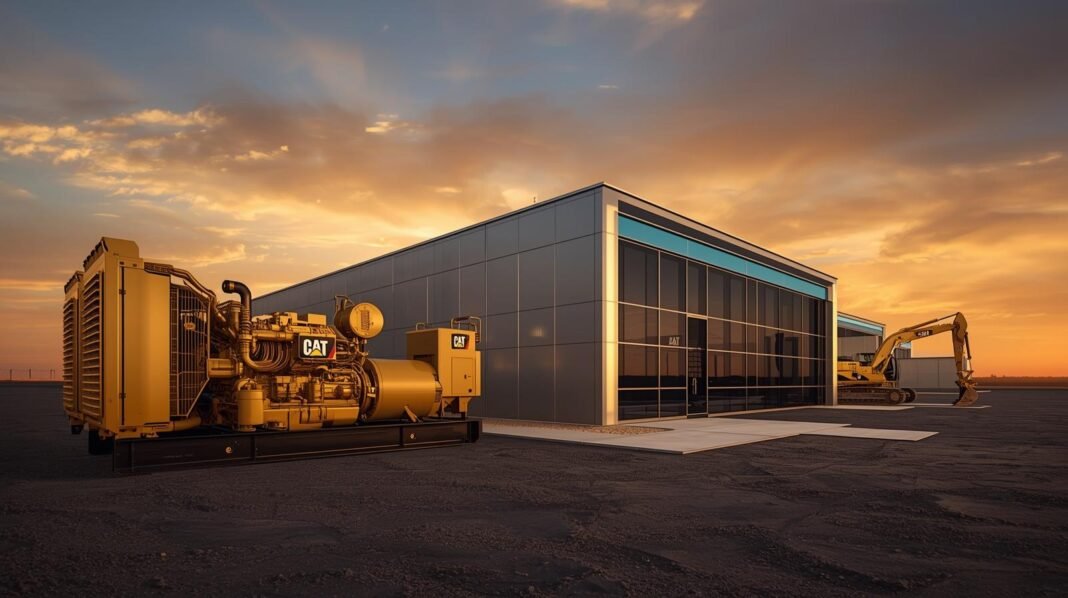Caterpillar Inc. (NYSE: CAT), the world’s leading manufacturer of heavy machinery and power solutions, is finding new momentum in an unexpected place — the global data center boom.
As cloud computing, artificial intelligence (AI), and digital transformation surge worldwide, the demand for reliable backup power and heavy-duty infrastructure is giving Caterpillar a strong new growth driver.
UBS and RBC See Bright Prospects for Caterpillar
According to a new report by Bloomberg, analysts at UBS Group AG have identified data centers as a key profit catalyst for Caterpillar over the next several quarters.
The company’s portfolio of diesel and gas-powered generator sets, combined with its experience in large-scale power projects, positions it as a critical supplier to the expanding data center industry.
A similar sentiment was echoed by RBC Capital Markets, which described Caterpillar’s outlook as “balanced with mid-cycle momentum,” noting that the company is benefiting from diversified demand across energy, construction, and industrial sectors.
Data Centers: The New Frontier for Power Solutions
Modern data centers — the backbone of AI applications, cloud storage, and digital finance — require uninterrupted power.
Even short power disruptions can cause losses worth millions. To mitigate this, most facilities rely on Caterpillar’s high-performance generator sets, which can provide instant backup power and ensure operational continuity.
In Africa, this demand is increasingly relevant. With the rise of regional data centers in Kenya, South Africa, Nigeria, and Egypt, the need for reliable power generation has never been greater.
Caterpillar’s extensive dealer network, including partners like Mantrac Group and Barloworld Equipment, gives it a strong foothold in these growing markets.
Africa’s Data Center Expansion: A New Market Opportunity
Africa’s digital economy is accelerating rapidly, driven by increased internet connectivity, mobile adoption, and cloud migration. According to the Africa Data Centres Association, investment in African data center infrastructure is projected to exceed US$5 billion by 2030.
However, power reliability remains a major challenge. This is where Caterpillar’s solutions — including hybrid power systems, gas turbines, and standby diesel generators — play a vital role.
Beyond construction and mining, the company’s power division is emerging as a key enabler of Africa’s digital growth.
“Caterpillar’s long-standing presence in Africa and its focus on integrated power solutions put it in a prime position to benefit from the continent’s data infrastructure boom,” notes agrimachinery.africa’s technology correspondent.
Beyond Machinery: Transitioning into Energy Infrastructure
While traditionally recognized for its yellow bulldozers and excavators, Caterpillar has quietly become a power infrastructure powerhouse.
The company’s Electric Power division now contributes significantly to overall revenue, supplying energy solutions to sectors including healthcare, telecommunications, and now — digital infrastructure.
In parallel, Caterpillar is investing in decarbonization technologies and alternative fuels to support customers aiming for lower carbon footprints — aligning with global sustainability targets.
What It Means for Africa’s Industrial and Agricultural Growth
As Africa continues its infrastructure development, reliable power will remain the foundation for both industrial expansion and agritech innovation.
The same generator technologies powering data centers can also support agribusinesses, irrigation systems, and food processing plants — making Caterpillar’s technology highly versatile.
From powering remote farms to backing up tech infrastructure, Caterpillar’s adaptability across sectors strengthens its relevance in a transforming African economy.
Conclusion
Caterpillar’s pivot into data center power is more than a short-term profit play — it’s a reflection of how industrial manufacturers are evolving to meet the demands of a digital future.
For Africa, this convergence between heavy machinery and digital infrastructure could accelerate progress in both agriculture and technology.
Also Read
Top 5 Organic Agriculture Stocks to Buy in 2025
Best Agriculture Stocks for Long-Term Growth
